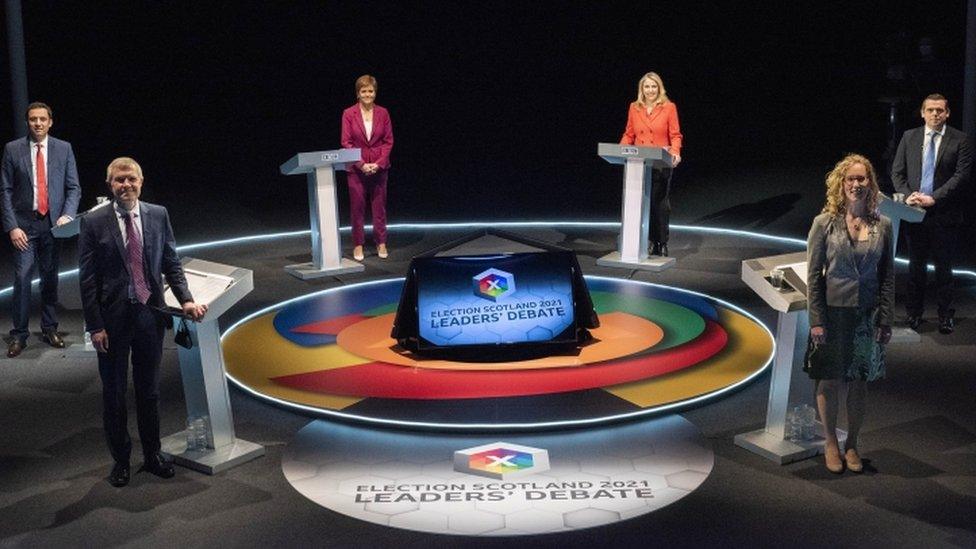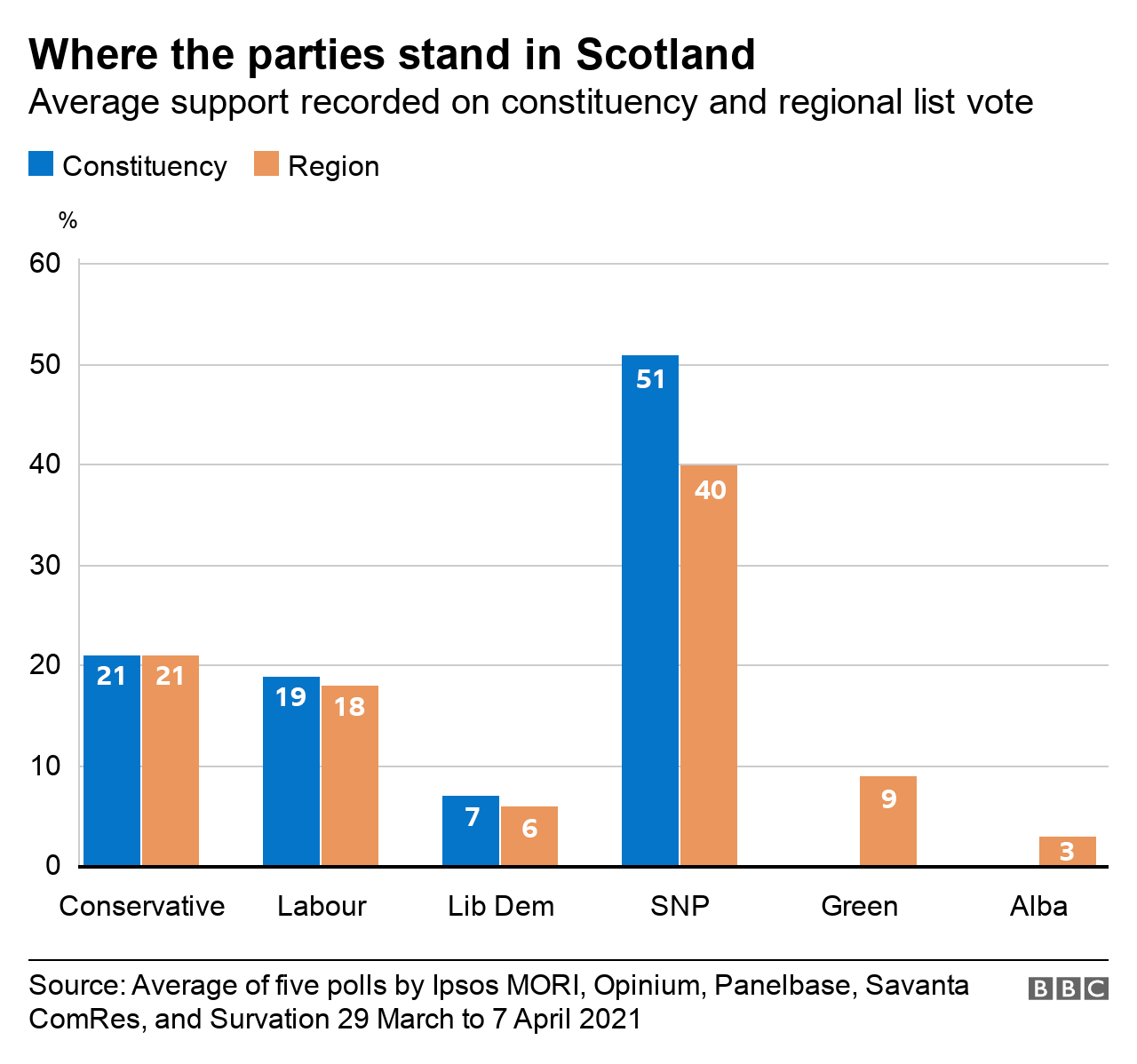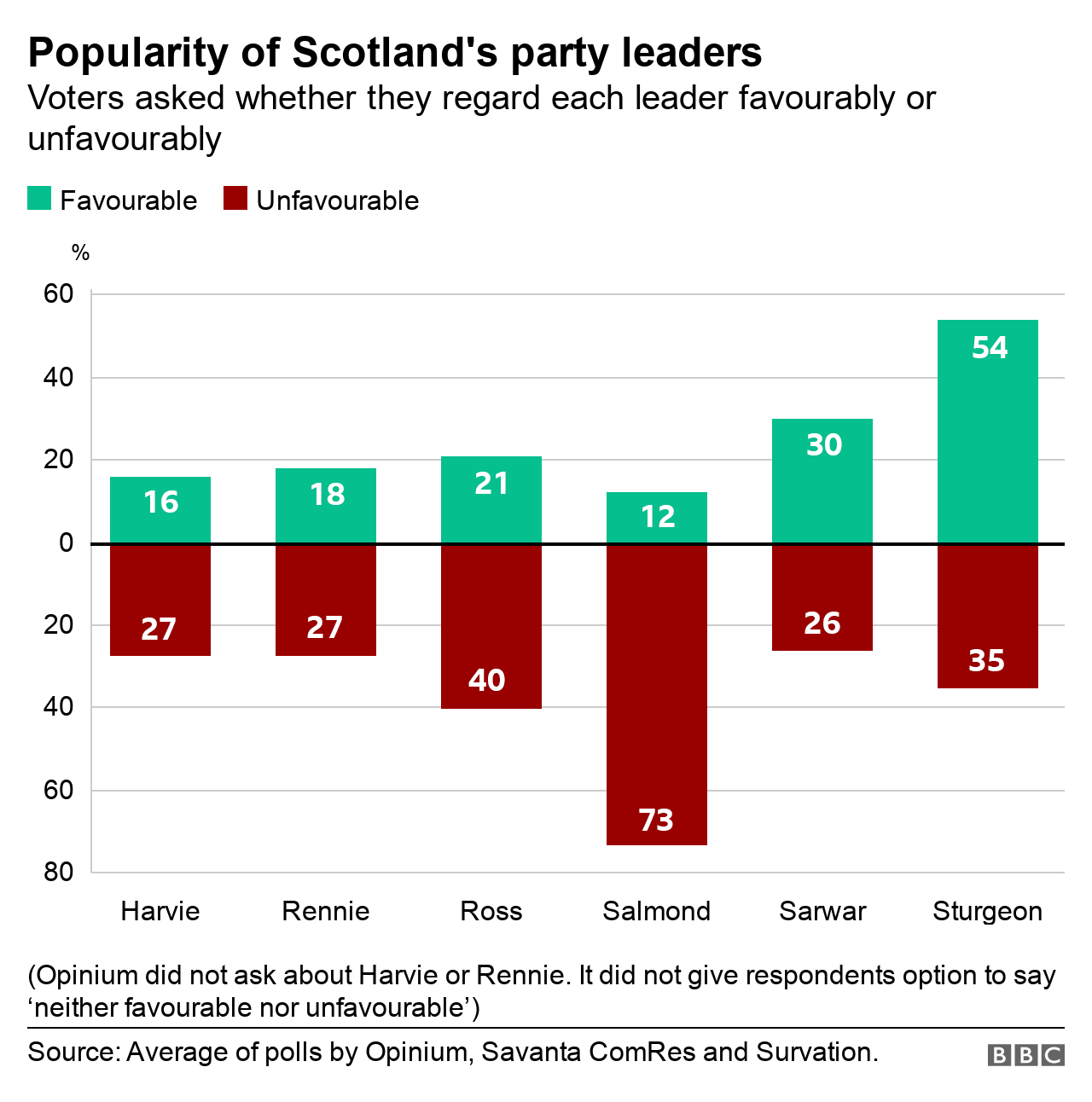Scottish election 2021: Where do the parties stand in the polls?
- Published

The campaign for the Scottish Parliament election resumes today, following the suspension agreed by the parties as a mark of respect for the Duke of Edinburgh.
The parties will now be attending once more to the task of trying to secure voters' support.
But how successful have they been so far?
Five polls have been published since the campaign kicked off towards the end of March.
Our graph shows the average level of support they have recorded for each party on both the constituency and the regional list vote.

These polls have put the SNP well ahead, with just over half of the constituency vote. However, the party has only two-fifths of the regional list ballot.
The Conservatives have a narrow two to three-point lead over Labour, while the Greens, who are mostly only contesting the list vote, enjoy a similarly narrow lead over the Liberal Democrats.
The new Alba Party, headed by Mr Salmond, is trailing on 3% on the regional ballot, which is the only vote it is contesting.

SCOTLAND'S ELECTION: THE BASICS
What's happening? On 6 May, people across Scotland will vote to elect 129 Members of the Scottish Parliament (MSPs). The party that wins the most seats will form the government. Find out more here.
What powers does the Scottish Parliament have? MSPs pass laws on aspects of life in Scotland such as health, education and transport - and have some powers over tax and welfare benefits.
Who vote? Anyone who lives in Scotland, is registered to vote and aged 16 or over on 6 May is eligible. You can register to vote online, external.

If these results were to emerge from the ballot boxes on 6 May, the SNP could well secure an overall majority of around nine seats or so.
Such an outcome might lead to a constitutional clash between the UK and the Scottish governments over holding another independence referendum.
Relatively few voters appear to have changed their minds. The numbers in the five campaign polls are similar to those obtained by the same five companies when they previously polled in late February and early March.
However, support for the Conservatives is down by two points on the constituency ballot. It is also one point lower on the list.
In contrast, support for the SNP is up by two points on the constituency ballot. At the same time, though, support for the party is down by two points on the list vote.
In part, this drop in the SNP list vote is a consequence of the intervention of the Alba Party, much of whose support comes from those who say they will vote for the SNP on the constituency vote.
However, many who intend to vote for the Greens are the SNP in their local constituency contest - and the Greens' vote has edged up a point.
The early party of the campaign presents both Douglas Ross, who only became Scottish Conservative leader since last August, and Anas Sarwar, who on the Scottish Labour leadership in February, with a crucial opportunity to become better known.
Both have had some success.
Back in December, 30% told Savanta ComRes that they did not know what they thought of Mr Ross. Now just 17% say that.
In October Ipsos MORI found that as many as 40% did not know whether they were satisfied or dissatisfied with Mr Ross' leadership; just 27% say that now.
When Mr Sarwar became leader in February 32% were unable to express a view about him. That figure has halved to just 16%.

Yet, as our chart shows, both are still a long way behind Ms Sturgeon in the popularity stakes - though doubtless Mr Sarwar will be encouraged by the fact that he appears to have made a relatively favourable impression so far.
Still, the key message that all the leaders will take from the early polls is that there is still much left to play for.
Will the SNP win an overall majority? Who will come second? Can the Greens keep fourth place? And might Mr Salmond yet upset all of the calculations?
As campaigning resumes, expect all of the leaders to redouble their efforts to win us over.

POLICIES: Who should I vote for?
CANDIDATES: Who can I vote for in my area?
PODLITICAL: Updates from the campaign
